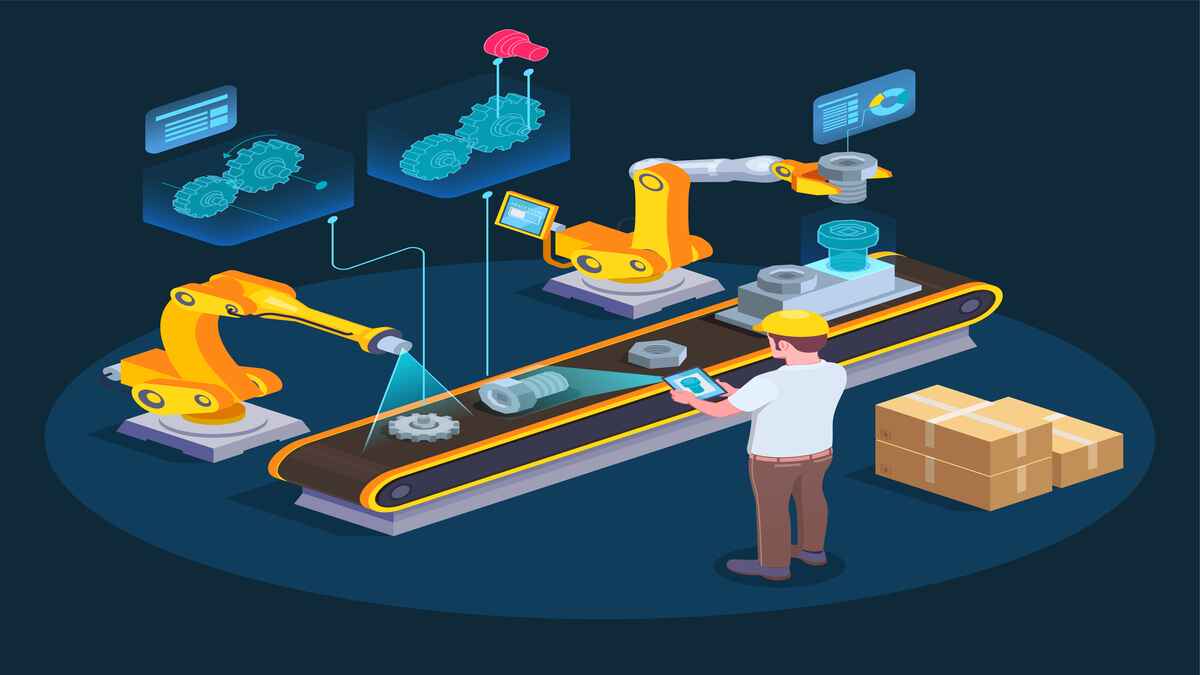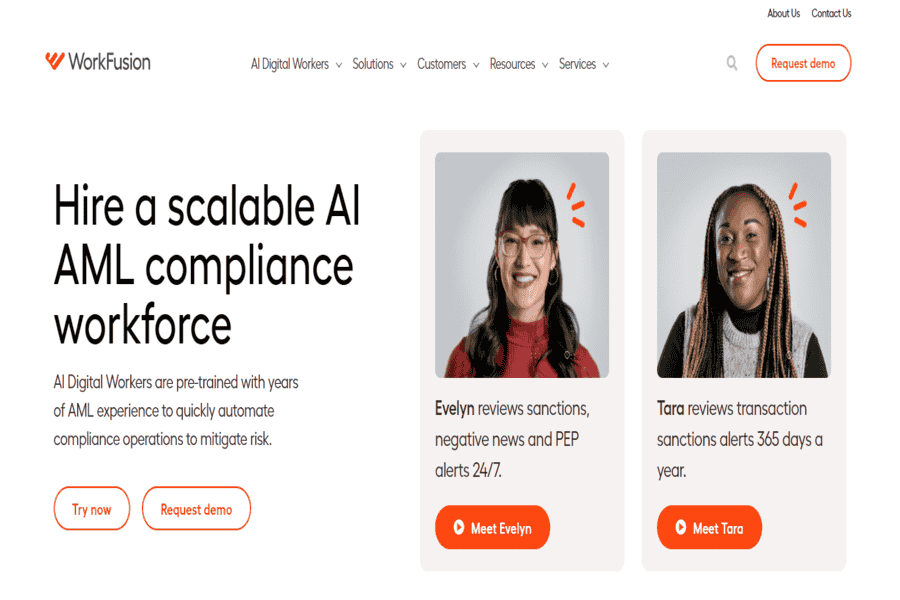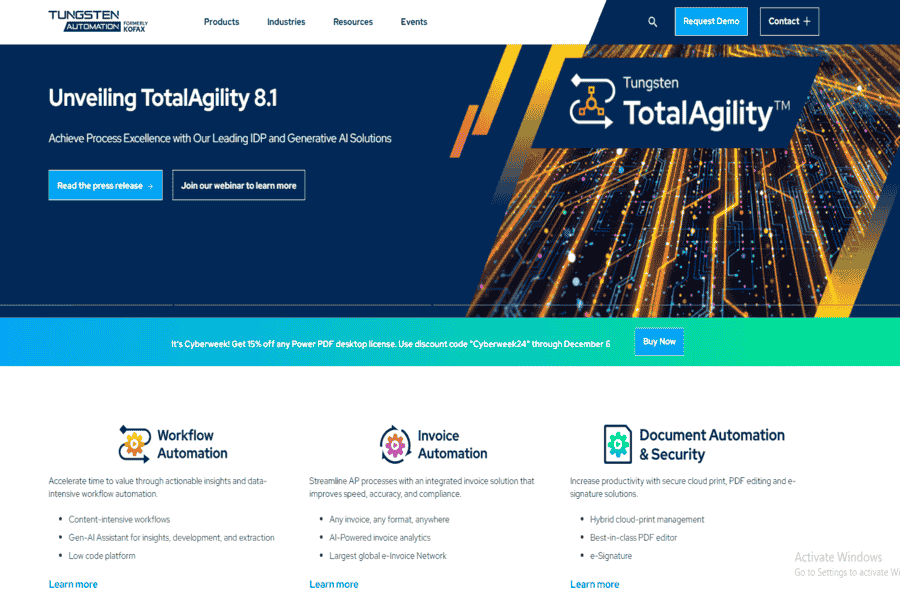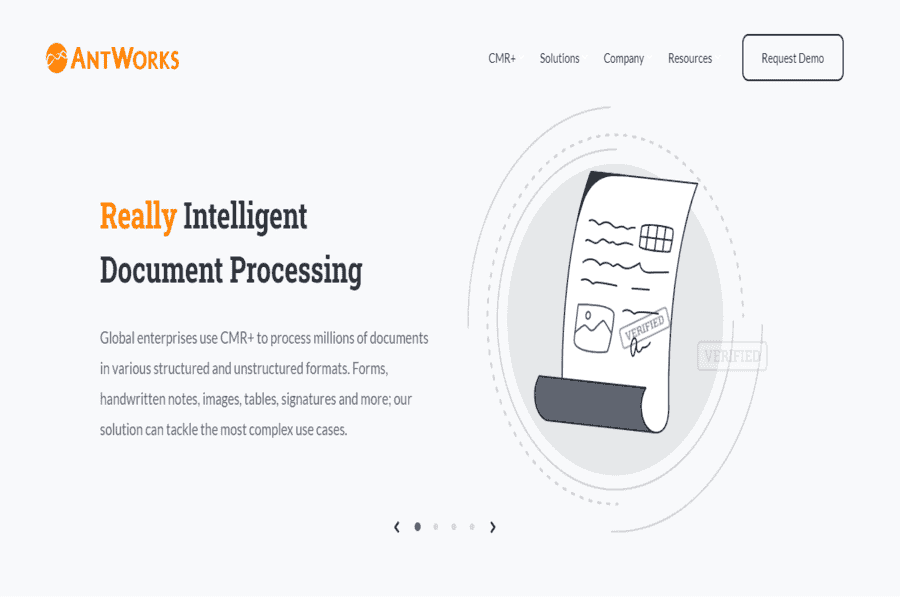Top Robotic Process Automation Tools Powered by AI in 2025
December 6, 2024


Robotic Process Automation (RPA) has revolutionized businesses’ operations, automating repetitive tasks and streamlining workflows. However, integrating Artificial Intelligence (AI) with RPA has taken automation to the next level. By combining the power of AI with RPA, organizations can achieve unprecedented levels of efficiency, accuracy, and intelligence in their operations. This synergy enables bots to handle complex tasks, make intelligent decisions, and adapt to changing circumstances, unlocking new possibilities for automation. By effectively utilizing AI fraud detection tools for banking, financial institutions can enhance their fraud prevention capabilities and protect their customers and assets from sophisticated cyber threats.
RPA involves using software robots to automate tasks that humans would otherwise perform. These bots can interact with various applications and systems, including web-based applications, enterprise software, and legacy systems. By automating these tasks, organizations can reduce operational costs, improve compliance, and enhance customer experience.
Robotic Process Automation (RPA) tools are designed to streamline and automate repetitive, rule-based tasks. To accomplish this, they offer a range of essential features:
RPA bots can mimic human actions by clicking buttons, navigating menus, and selecting options within user interfaces.
They can accurately input data into forms and fields, ensuring data integrity.
RPA tools can extract data from web pages and other digital documents, making it accessible for further processing.
RPA can seamlessly integrate with older, legacy systems, extending their lifespan and value.
It can interact with popular enterprise software like SAP, Oracle, and Salesforce.
RPA tools can integrate with cloud-based applications such as Google Workspace and Microsoft 365.
RPA bots can extract data from various sources, including PDFs, Excel spreadsheets, and databases.
They can clean, format, and transform data into a usable format.
RPA tools can validate data for accuracy and consistency, ensuring data quality.
RPA bots can identify errors and exceptions during automation processes.
They can implement predefined recovery actions to mitigate the impact of errors.
Detailed logs and reports can be generated to track errors and performance metrics.
RPA tools can track bot performance, including execution time, success rates, and error rates.
They can measure the efficiency of automated processes and identify areas for improvement.
RPA can provide valuable insights into business operations by analyzing data.
Selecting the optimal RPA tool is a critical decision that can significantly impact the success of your automation initiatives. To make an informed choice, consider these key factors:
The tool should accommodate increasing automation needs as your organization expands.
It should handle a growing number of bots and processes without compromising performance.
The underlying infrastructure should be able to scale to meet future demands.
The tool should have robust security measures to protect sensitive data.
Strong access controls should be in place to limit access to authorized personnel.
Data should be encrypted both at rest and in transit.
The tool should comply with relevant industry regulations like GDPR and HIPAA.
Evaluate the licensing fees, including initial costs and ongoing maintenance fees.
Consider the costs associated with deployment, training, and infrastructure.
Calculate the potential cost savings and productivity gains from automation.
A user-friendly interface can accelerate development and adoption.
Tools with low-code or no-code capabilities can reduce development time and effort.
The tool should have a clear and intuitive design.
The tool should be able to integrate with various APIs to connect with different systems.
It should be able to integrate with legacy systems, often using screen scraping or other techniques.
It should seamlessly integrate with cloud-based applications like Salesforce, Google Workspace, and Microsoft 365.

A leading RPA platform that integrates AI and machine learning to automate workflows, tasks, and processes across various industries.
Free Community Edition; Enterprise pricing is available upon request.

Known for its scalable RPA solutions, Blue Prism combines RPA with AI capabilities to enhance business automation and decision-making.
Custom pricing for enterprise solutions.

A popular RPA platform that combines AI, machine learning, and cognitive automation to streamline workflows and processes.
A free trial is available; there is custom pricing for enterprises.

An RPA platform that integrates AI and cognitive automation to handle complex tasks, including data extraction, document processing, and customer service.
Custom pricing.

Pega combines RPA with AI to streamline end-to-end workflows, customer service, and decision-making processes across industries.
Custom pricing.

NICE offers AI-powered RPA solutions to optimize customer engagement, back-office automation, and business processes.
Custom pricing for enterprise solutions.

Kofax combines RPA and AI to automate document-heavy processes like invoice processing, customer onboarding, and more.
Custom pricing.

A leading RPA platform that integrates AI and machine learning to automate workflows, tasks, and processes across various industries.
Free Community Edition; Enterprise pricing is available upon request.

ElectroNeek is an RPA platform for IT and managed service providers (MSPs). It focuses on building scalable automation solutions while supporting advanced workflows through AI capabilities.
Free community edition available; enterprise pricing depends on user requirements.

AntWorks offers a unique RPA platform powered by fractal science and AI. It specializes in automating document-heavy processes, making it ideal for the banking, insurance, and healthcare industries.
Contact AntWorks for tailored pricing based on specific requirements.

Rocketbot is a flexible RPA platform designed for businesses of all sizes. It simplifies automation with easy-to-use tools and robust support for cross-platform integration, enabling enterprises to streamline repetitive tasks efficiently.
Free community edition available; enterprise pricing starts at $100/month.

Hypatos specializes in AI-powered process automation for financial and back-office operations. Its platform excels at document understanding and streamlining invoice processing, making it a top choice for finance-heavy organizations.
Custom pricing based on usage and deployment scale.

OpenBots is an open-source RPA platform offering automation solutions with zero bot licensing fees. It provides robust features for enterprises looking for cost-effective automation.
Free, open-source edition; optional enterprise support plans are $2,500/year.

Redwood Software provides a cloud-based automation platform that specializes in streamlining business-critical processes. It integrates with various enterprise systems to deliver scalable and reliable automation solutions.
Custom pricing is available upon request.

TruBot by Datamatics is an enterprise-grade RPA tool that leverages AI and cognitive automation to deliver process efficiency. It is tailored for industries like BFSI, healthcare, and manufacturing.
Custom pricing based on deployment scale and features.
The successful implementation of RPA requires a systematic approach involving several key steps:
Select processes that are repetitive, rule-based, and have a high volume of transactions.
Map out the selected processes to understand their steps, decision points, and potential bottlenecks.
Evaluate the technical feasibility and potential benefits of automating each process.
Create detailed workflows that outline the sequence of actions to be performed by the bots.
Use RPA tools to build bots that mimic human actions like clicking buttons, filling out forms, and extracting data.
Develop comprehensive test cases to verify the bot’s functionality and accuracy.
Test individual components of the bot to identify and fix defects early on.
Test the bot’s integration with other systems and applications.
Involve end-users to validate the bot’s performance and usability.
Prepare the deployment environment, including servers, databases, and network configurations.
Deploy the tested bots to the production environment.
Use an orchestration tool to manage and schedule bot execution.
Implement robust error-handling mechanisms to address exceptions and failures.
Continuously monitor bot performance, including execution time, success rate, and error rate.
Analyze logs to identify potential issues and bottlenecks.
Keep the RPA tools and bots updated with the latest patches and security fixes.
Retrain bots as needed to adapt to changes in processes or systems.
While RPA is a powerful tool for automating tasks, it’s important to recognize its limitations:
RPA excels at automating tasks that follow a predefined set of rules and conditions.
It may need help with tasks that require significant judgment or creativity.
RPA bots cannot make complex decisions that involve ambiguity or uncertainty.
Integrating RPA with AI and machine learning can enhance capabilities for tasks requiring advanced decision-making.
RPA tools may need help extracting data from unstructured sources like PDFs, images, or handwritten documents.
Advanced techniques like natural language processing (NLP) may be necessary to handle unstructured data effectively.
RPA bots can be impacted by changes in user interfaces, requiring adjustments or reprogramming.
System updates or upgrades can disrupt RPA processes.
Acquiring and licensing RPA tools can involve significant upfront costs.
Regular maintenance and updates are required to ensure optimal performance.
The future of RPA is bright, with exciting advancements on the horizon. Here are some key trends shaping the future of RPA:
Combining RPA with AI technologies like machine learning and natural language processing enables bots to handle more complex tasks.
AI-powered bots can analyze data, identify patterns, and make intelligent decisions.
Bots can learn from their experiences and improve their performance over time.
Intelligent automation platforms provide a unified approach to automation, integrating RPA with other technologies like business process management (BPM) and workflow automation.
These platforms can automate entire business processes from beginning to end.
Intelligent automation can significantly boost efficiency and productivity by automating complex processes.
Hyperautomation involves scaling automation efforts across the organization.
A digital workforce of bots can work alongside human employees to streamline operations.
Organizations can achieve maximum efficiency by continuously monitoring and optimizing processes.
Cloud-based RPA solutions offer scalability and flexibility.
Organizations can avoid the costs of maintaining on-premises infrastructure.
Cloud-based RPA enables remote access and collaboration among teams.
The convergence of RPA and AI has ushered in a new era of intelligent automation. By leveraging both technologies’ strengths, organizations can significantly enhance operational efficiency, reduce costs, and improve customer satisfaction. As AI continues to advance, so will RPA tools’ capabilities. By embracing this powerful combination, businesses can stay ahead of the curve and thrive in the digital age.
